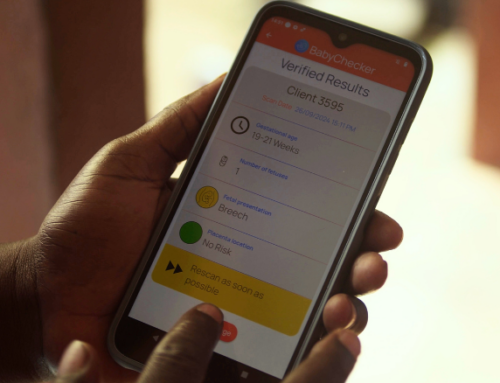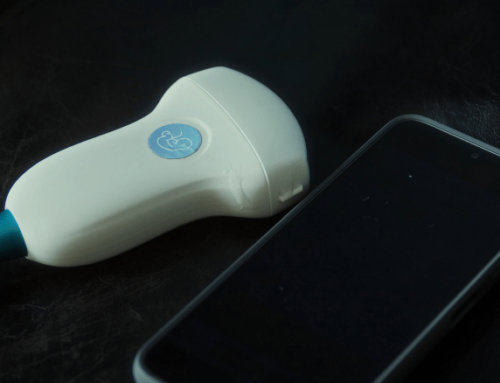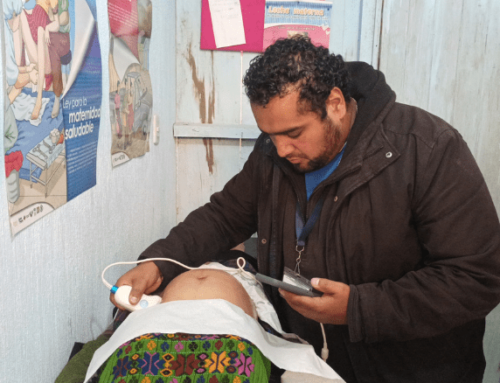Approximately 700 women die every day due to preventable complications related to pregnancy and childbirth. Nearly 95 percent of these maternal deaths occur in low- and middle-income countries. In LMICs, few women attend ANC before 24 weeks, and in rural settings, even fewer women receive any ultrasound scan at all.
The implementation of obstetric ultrasound for ANC faces challenges in LMICs. This is especially true in rural settings where the incidence of maternal mortality and obstetric complications is the highest. Major challenges include the high cost of ultrasound equipment, limited access to electricity, and the shortage of trained professionals. Training clinicians to operate and interpret ultrasound is both costly and time-intensive. This has led to minimal or no ultrasound coverage in many rural health systems during antenatal care.
A practical solution with immediate impact
BabyChecker is an AI solution that analyses obstetric ultrasound scans to identify risks in pregnancy. Scans can be easily acquired with a handheld ultrasound and by any frontline health worker within 2 minutes. The process is standardized and simple:
- Health workers watch a simple 3-minute training video
- BabyChecker app guides the user with a standardized protocol of six sweeps (three vertical, three horizontal) across the abdomen
- The BabyChecker app, running offline on a mobile device, instantly analyzes the scan
- Results for gestational age, fetal presentation, and placenta localization are immediately available
- After remote analysis, additional outputs like multiple pregnancy detection and 2D fetal images are provided
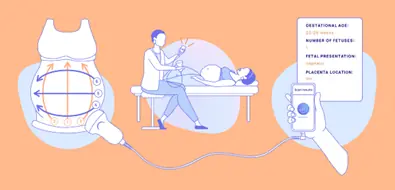
Figure 1: BabyChecker Sweep Protocol diagram showing the 6-sweep pattern
This workflow eliminates the need for specialist sonographers and significantly expands maternal screening capacity in under-resourced settings.
High usability from the first attempt
Recent field data across multiple deployment sites show that 76.3% of first-time users could capture usable scans immediately after watching the short training video.
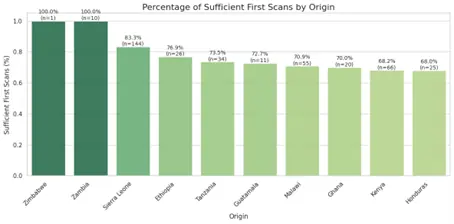
Figure 2: Bar chart showing the percentage of sufficient first scans by country
This finding is significant compared to traditional ultrasound operation, which often requires weeks of specialized training.
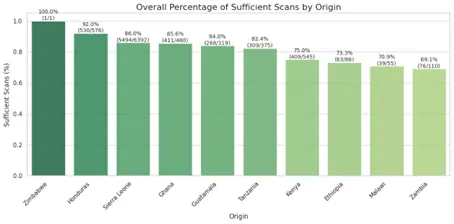
Figure 3: Graph showing the overall percentage of sufficient scans by origin
With continued use, user performance improves further. When we look at all scans performed (not just first attempts), the overall sufficiency rate rises to 85.0%. This highlights the adaptability of health workers and the efficacy of BabyChecker’s training and interface design.
Why scan quality is essential
BabyChecker’s AI depends on accurate input. When scans are improperly performed, even the most sophisticated AI can’t extract accurate information, potentially leading to:
- Missed pregnancy complications
- Inaccurate gestational age estimates
- Failed detection of multiple pregnancies
- Incorrect placenta localization
Currently, expert reviewers mark 15% of scans as insufficient. This is a critical concern, particularly in remote regions where patients travel long distances for a single visit and cannot return for follow-up.
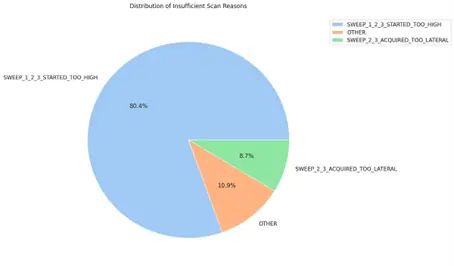
Figure 4: Pie chart showing reasons for scan insufficiency
Addressing the root causes of scan failure
Analysis of insufficient scans reveals four recurring challenges:
- Inaccurate probe positioning
- Poor sweep technique
- Early-stage gestation scans
- Insufficient gel use or inadequate pressure
This data is being used to refine user training and support resources.
Improving first-time scan success
To boost user outcomes, the following improvements are underway:
- Updated with improved video tutorial on common mistakes
- We are currently developing AI-based quality control that immediately identifies poor-quality sweeps
- Easily understandable reference materials that don’t require advanced medical knowledge
These updates aim to reduce user errors and increase the percentage of usable scans from first use.
Making quality care accessible
The ability to perform reliable ultrasound scans with minimal training is a step forward for maternal care. BabyChecker aligns with the broader goal of strengthening healthcare systems by equipping frontline workers with tools that work in real-world conditions.
Its expansion across 12 countries shows this approach’s demand and viability. More than 8,000 scans have already been completed, and over 200 health workers are now using the solution, directly impacting the communities they serve.
Conclusion
BabyChecker demonstrates that equitable access to maternal health services is achievable through targeted innovation. With over three-quarters of first-time users capturing high-quality scans and an upward trend in overall success rates, the solution enables earlier, more accurate pregnancy screening in areas where it is needed most. Continued improvements to training and support will ensure even more mothers receive timely, effective care.

